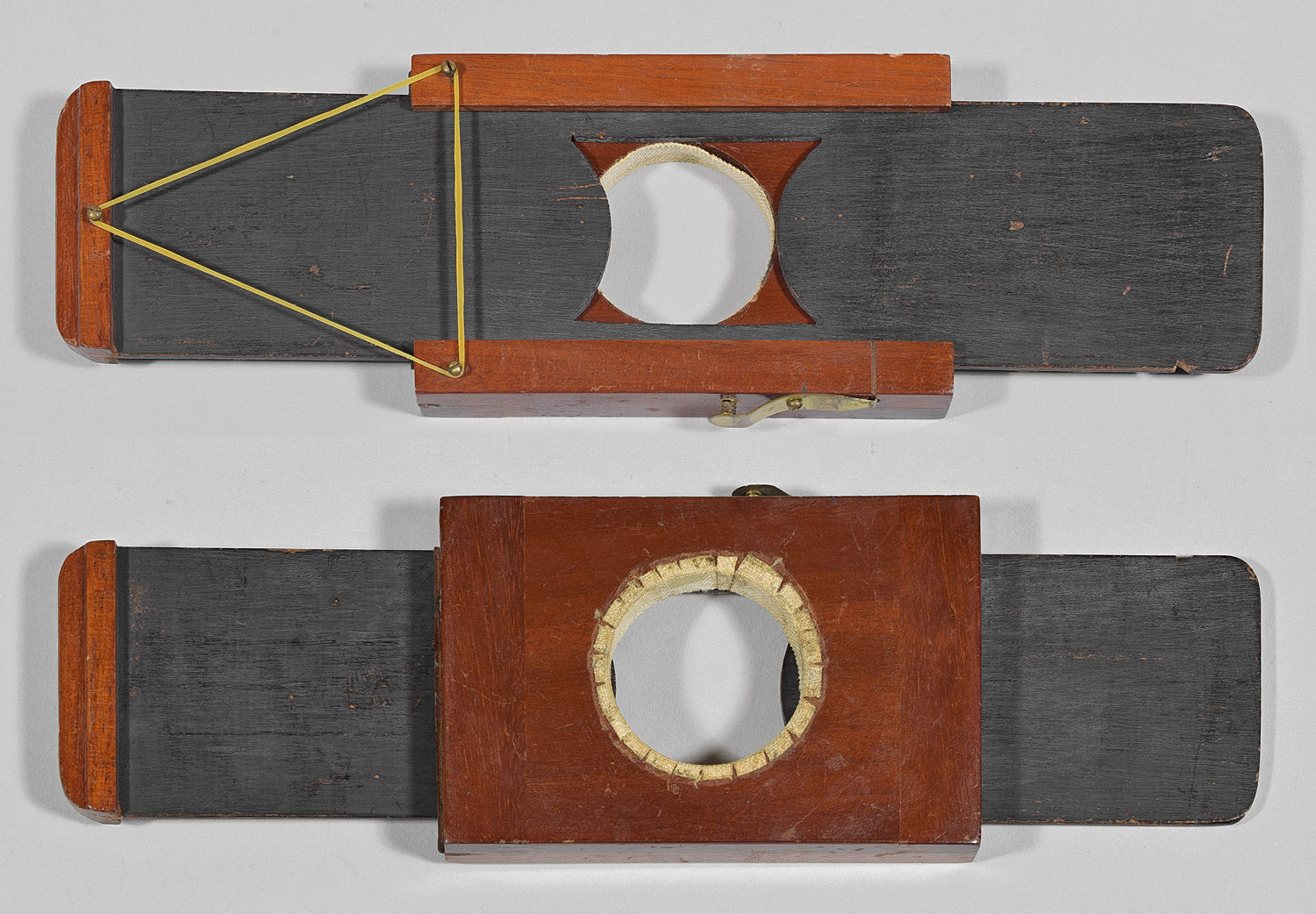Probably Blair Camera Co. (Boston, MA)
Drop Shutter - c.1890's
Illustrated Catalogue and Price List of Photographic Apparatus
and Supplies Manufactured and Sold by The Blair Camera Co.,
Oscar Foss (San Francisco, CA), 1890, p. 31
1890lp061-p.31-drop%20shutters.jpg)
An unmarked shutter that was purchased with a 5x7" Blair Camera Co.
Utility View Camera No. 1. The original canvas case for this
camera could hold the camera, three plate holders and the shutter.
Because it was inside the case, it is more likely to be a Blair drop
shutter than another manufacturer.

An unmarked shutter
associated with a 4x5" ROC Commodore, but did not fit into the original
canvas case for the camera. It may have been an ROC product, but
is identical to the shutter above.

Notes: This
shutter was associated with a
Schultze
Mfg. Co. Champion Camera Improved. It is not marked,
but appears to be identical to the Universal Drop Shutter illustrated in
the 1886 R.O.C. catalog. The three holes on the right side (one on
the handle of the sliding part, and one one each side of the fixed part)
were for brads from which to stretch a rubber band.
Directions:
-Install by pressing it on the lens 90 ½
counter-clockwise from what is shown in the image above, the wooden
handle uppermost.
-Prepare it by pulling the long black piece all the way up until the
brass piece catches in the notch visible at the left. The lens is
covered by the bottom of the slider.
-Pull the plate holder's dark slide out.
---If an
instantaneous exposure is desired, press and hold down the brass trip
lever. The black slider falls all the way down; the hole in the
slider drops past the lens and makes the exposure.
---If a longer, or bulb-type exposure is desired, the brass
trip level is pressed but immediately released; the slider then catches
a notch halfway down that leaves the lens open until the brass lever is
pressed again to send the slider all the way down.
The hourglass shape of the exposure hole was thought to make the exposure more even over the plate. Other drop shutters had square or rectangular holes, were made all or partly out of metal, or used rubber bands or springs to increase the speed of the drop (and decrease the time of exposure).
References:
Illustrated Catalogue and Price List of Photographic Apparatus
and Supplies Manufactured and Sold by The Blair Camera Co.,
Oscar Foss (San Francisco, CA), 1890, p. 31
